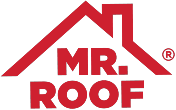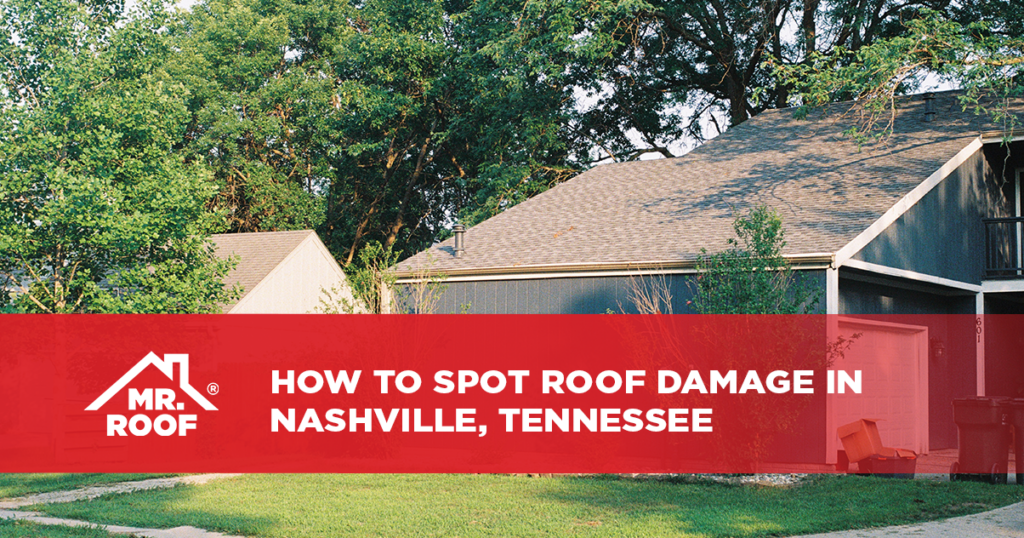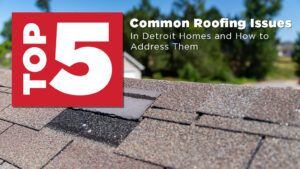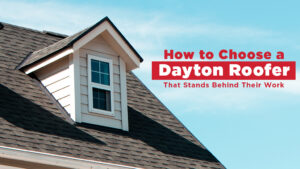As a home ages or after severe weather, homeowners often wonder how they can identify damage to their roofs. Sometimes the damage is obvious and happens suddenly, while other times, it requires careful inspection and comes on more gradually. There are several things to look out for when it comes to inspecting your roof for damage.
Nashville weather and your roof
The weather in Nashville, Tennessee, tends to be hot starting in March or April, climbing to over 100 degrees in the thick of the summer months. Rain showers also occur regularly throughout the year. If your roof has been installed correctly and your attic is properly ventilated, the high temperatures and heavy rain are usually nothing to worry about.
Nashville does experience some extreme weather, however, which can significantly decrease the lifespan of your roof. Occasional tornadoes, hailstorms, and straight-line winds during heavy thunderstorms can all lead to problems for your roof. After a storm, homeowners can try to check for any damage themselves by looking out for some common signs:
- Hailstorm damage
When hail hits and damages a roof, a black dot is usually left behind due to granules of the shingles being rubbed off, exposing the black roof felt. - Wind damage
After a strong windstorm, a roof may become damaged in many ways. Loose, missing, curling, or peeling shingles are often telltale signs of wind damage. Wind can also cause a loss of granules similar to a hailstorm, which will expose the black roof felt underneath the shingle. - Tornado damage
Often much more obvious, a tornado can also cause roof damage. Missing shingles, a roof being torn off, or trees and limbs causing damage to your roof are all possibilities during a tornado.
Identifying other types of roof damage
In addition to immediate damage from a heavy storm, there are other types of damage that can occur with any roof instantly or over time that homeowners should be aware of. Look out for the following signs of roof damage and learn what they might mean.
- Water damage
One sign of a leaky roof is water damage inside the home. Dingy stains on the wall or ceiling of your home or moldy areas in your attic or siding can be indicators of a leak. - Check your gutters
If you notice granules in your gutters, this can be an indication of roof damage. The granules have likely come from your shingles for one of several reasons, such as heavy rain, heat, or critters damaging them. - Damage to soffit or fascia
The soffit is the exposed part of your home’s siding underneath the roof’s overhang. Directly above the soffit is the portion of the siding called the fascia. Damage in either of these areas can signal an issue with the roof or improper gutter drainage.
Preventing roof damage
While there isn’t much that homeowners can do to prevent mother nature from wreaking havoc on a roof, there are some maintenance tips that can improve the life of your roof.
- Regular inspection is one key aspect of ensuring your roof is performing as it should
This should be done by homeowners from the ground as well as by a professional every few years who will get up onto your roof for a thorough inspection. - Keeping nearby trees trimmed properly is important for a couple of reasons
The first is to avoid damage by limbs during a storm, either from them falling off onto your roof or rubbing against shingles in high wind. Secondly, keeping limbs away from your roof helps to discourage animals from climbing on it and getting into your chimney and vents. - Remove debris, no matter how insignificant it may seem
Even small limbs and leaves can trap water and encourage algae growth which damages shingles. It is a good idea to have a telescoping pole to easily remove debris from your roof.
What to do if your roof is damaged
If you notice damage to your roof, it is important to get the issue addressed quickly to prevent further issues and reduce the likelihood of major repairs being needed. You should get your roof routinely inspected every few years by a professional, as well as after major weather events, since roof damage is not always obvious to the untrained eye. At Mr. Roof, we are happy to provide routine inspections and storm damage inspections to ensure your roof is performing at its best if you don’t feel safe or qualified to do the job yourself. Contact us today to schedule an inspection.









